Of all the things to do in Hervey Bay, the whale watching capital of the world, seeing the humpback whales in their natural habitat on the Humpback Highway is not to be missed. There are several whale watching tours to choose from but if you have a passion for ecotourism and marine life, then the Pacific Whale Foundation whale watch cruise is the one to pick.
Platypus Bay is popular with humpback whales due to its unique sheltered and shallow waters that are perfect for the whales to rest and play. Humpback whales come here from May to late October each year as part of a long migration back to Antarctica. There are several different types of whale-watching cruises in Hervey Bay.
Contents
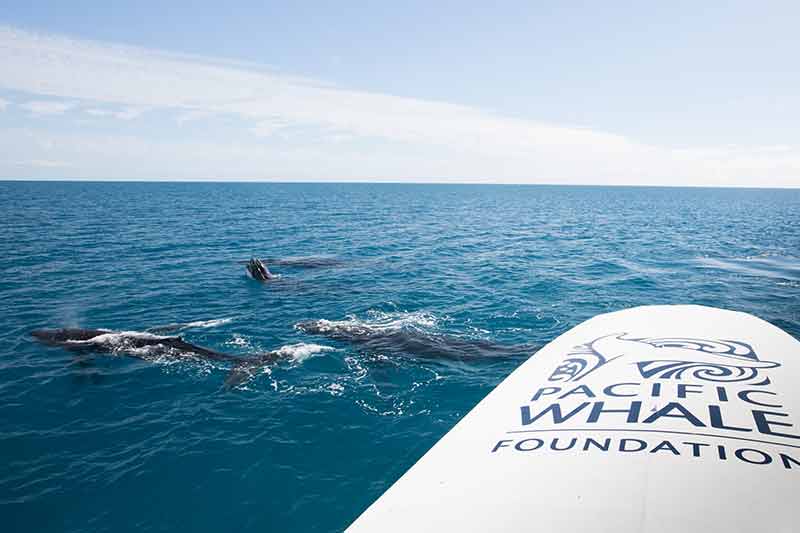
Pacific Whale Foundation
Pacific Whale Foundation is an international NGO that has been working to save whales since 1980.
Profits from their Hervey Bay tours support whale research in Australia.
Pacific Whale Foundation’s vessel Ocean Defender, is a small, fast, eco-friendly vessel.
They conduct two or three cruises each day during whale watching season. And their cruises are led by certified marine naturalists and researchers who specialise in whale behaviour and habits.
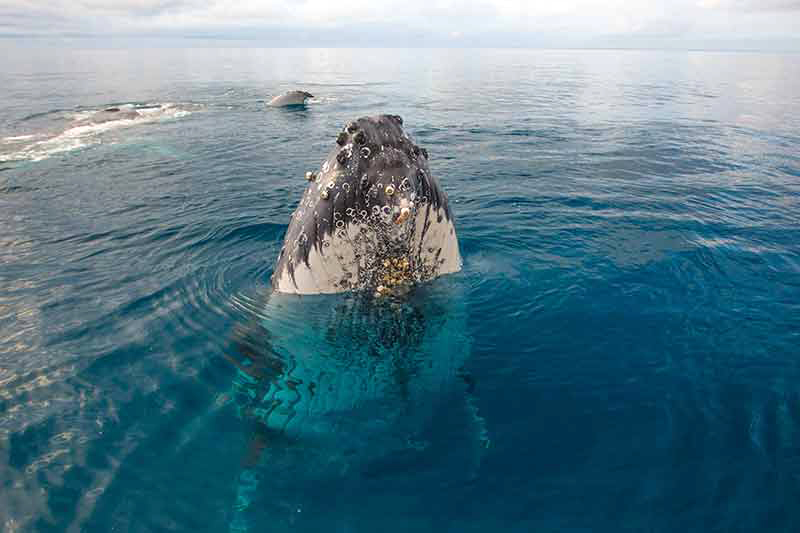
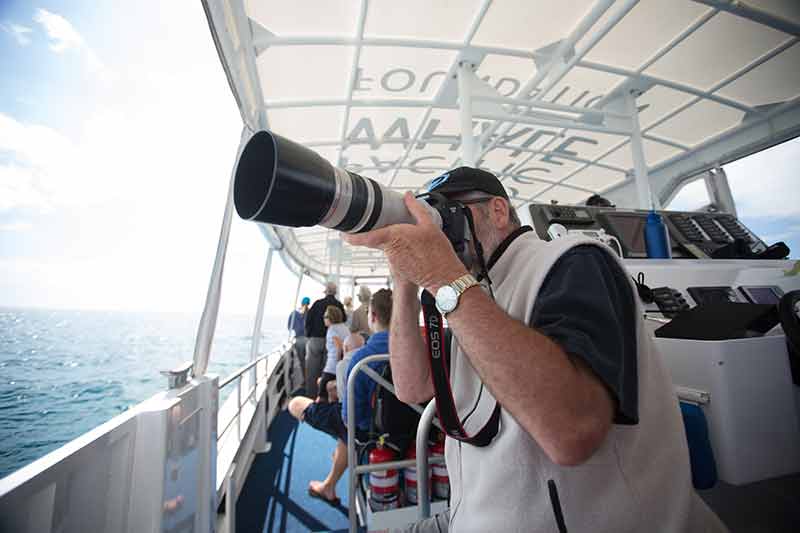
I’m lucky enough to be on board with Founder and Executive Director of Pacific Whale Foundation, Greg Kaufman, who is a pioneer in non-evasive humpback whale research.
His wealth of 30 years knowledge is astounding, from migratory habits to mating, play, ‘boat mugging’ activity and whale song.
I’m amazed to learn that humpback whales can live up to 135 years old and one as young as five years old can give birth.
Ocean Defender
Ocean Defender is a relatively small but fast boat compared to other vessels in Hervey
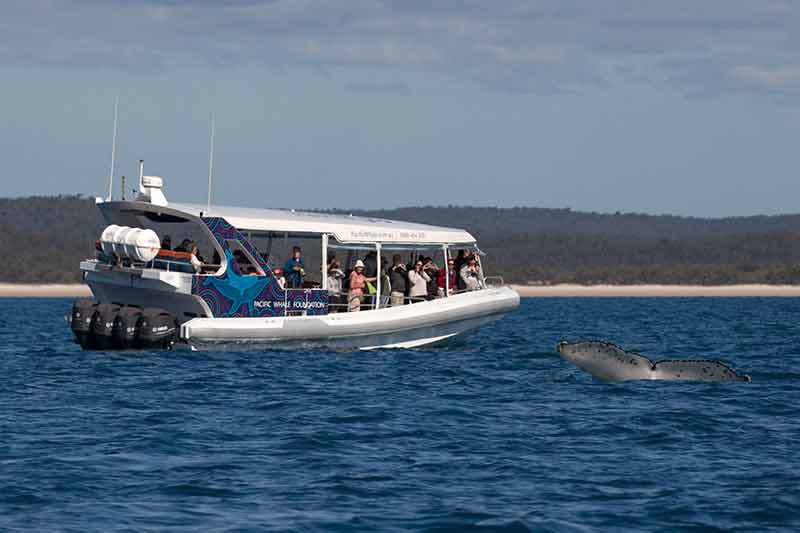
Bay’s whale-watching fleet. Because of its size, you get an intimate experience with whales, as you are virtually at the water’s edge with them.
Plus they use a hydrophone to transmit whale noises for you to hear.
We are blessed with a gloriously sunny and warm winter’s Queensland day, with blue skies and mid 20C temperatures.
The water is calm as we head at full speed towards Platypus Bay, just off UNESCO World Heritage-listed Fraser Island.
In less than 40 minutes after leaving the Great Sandy Bay Marina, we see our first water spout.
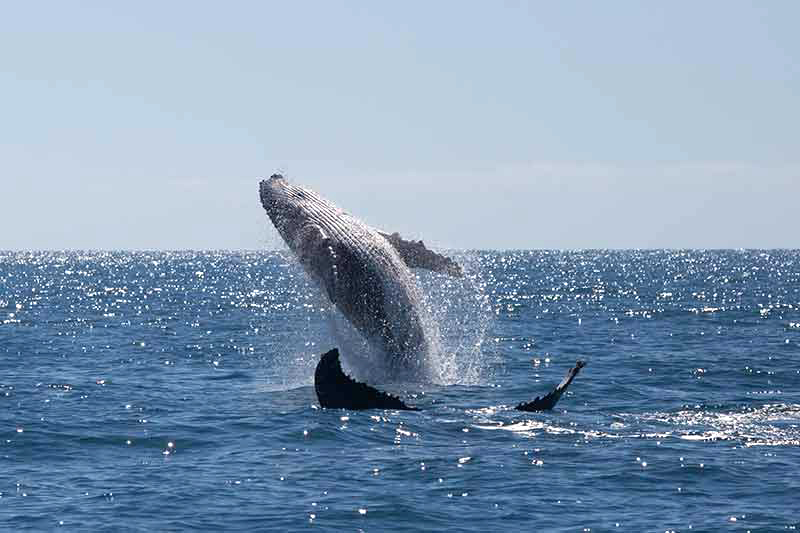
“Whales Ahoy,” shouts a crew member. As we approach a pod of three humpbacks, one repeatedly breaches out of the water, followed by a series of pectoral fin slapping.
One breach is followed by another and yet another humpback leaves a pool of white frothy water on the surface.
It’s a truly spectacular start to our whale-watching tour.
Humpback Whale Behaviour
Behaviours vary from whale to whale. Some individuals are breachers and others are more vocal.
One of the whales in the first pod expresses a rather guttural burp each time it surfaces, much to the amusement of the children on board!
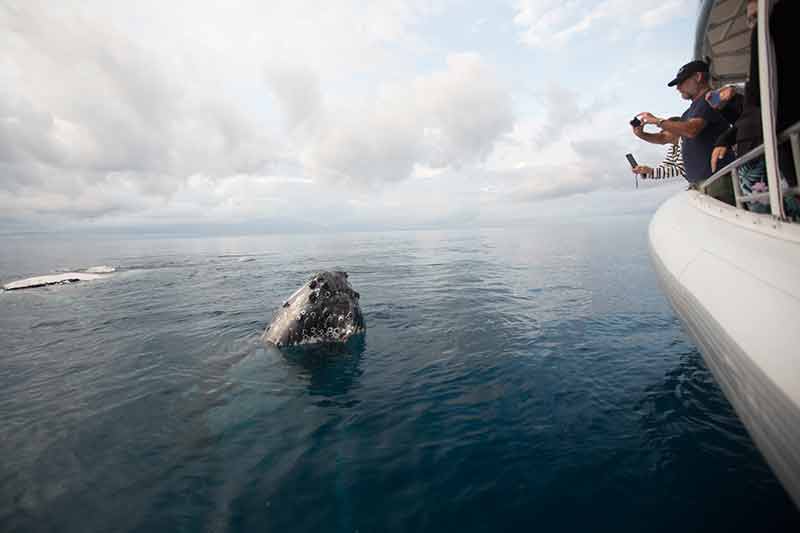
Many whales seem happy to just hang in the bay or around boats.
‘Boat mugging’ is a popular activity among the juvenile humpback whales in Platypus Bay as these young whales are especially curious.
It is not uncommon to see whales come right up to a boat, spy-hopping as if to check out who is on board and what they are doing.
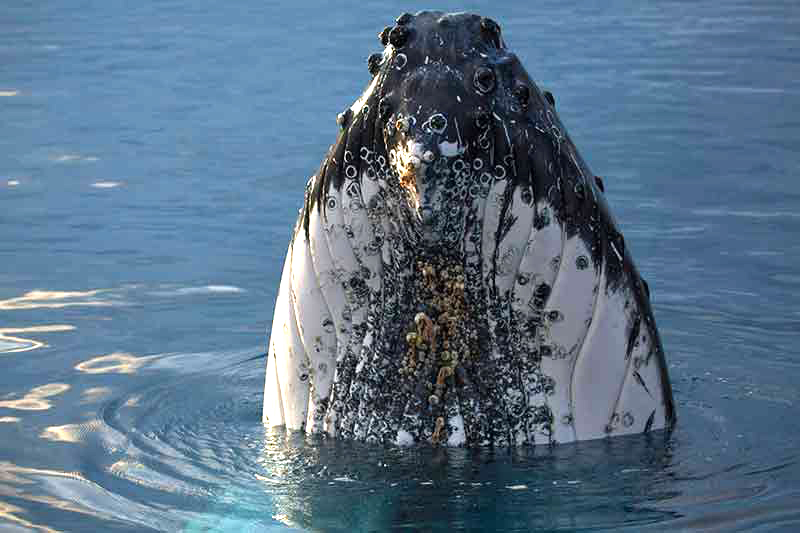
When a whale is below the surface close to the boat, waving your arms over the water and shouting can attract their attention. So, we all join in the activity.
Photobombing is also a regular occurrence. It’s not uncommon to focus your lens on one whale, only to have another splashing into the scene.
Humpback Whales Are Everywhere
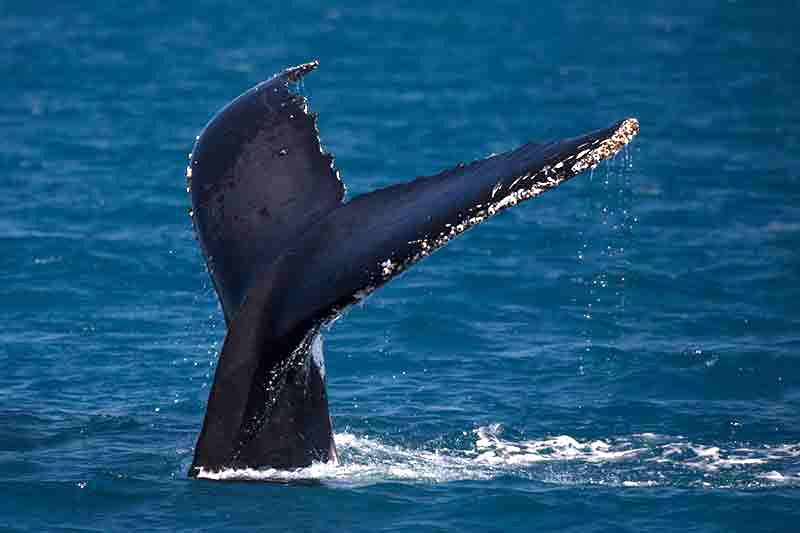
Today, countless whales join us on our early morning three-hour cruise.
“They’re everywhere, they’re everywhere,” is a common cry of delight from those on board.
Whale spouts, low and high fluke dives and breaches are on the horizon as far as we can see and there are numerous pods closer to us.
Greg explains that the humpback whales we are seeing are mainly juveniles, “too old to travel further north and too young to mate,” he says.
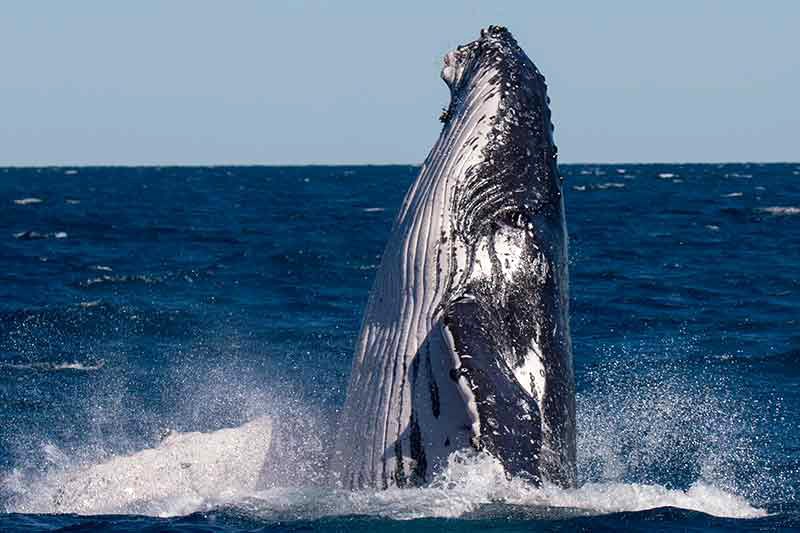
He describes whales of up to eight years old as “sexually immature kids hanging out at the shopping mall.
They’re attracted to this boat because it’s exactly the same size as their mom,” he says.
The teenagers rest in Hervey Bay from mid-July to the end of August.
When the mothers and their calves appear, they do not eat here but feed their babies off their own blubber, at times up to 5000kg.
In fact, whales don’t eat until they return to their freezing southern waters where their main food source, krill is in abundance.
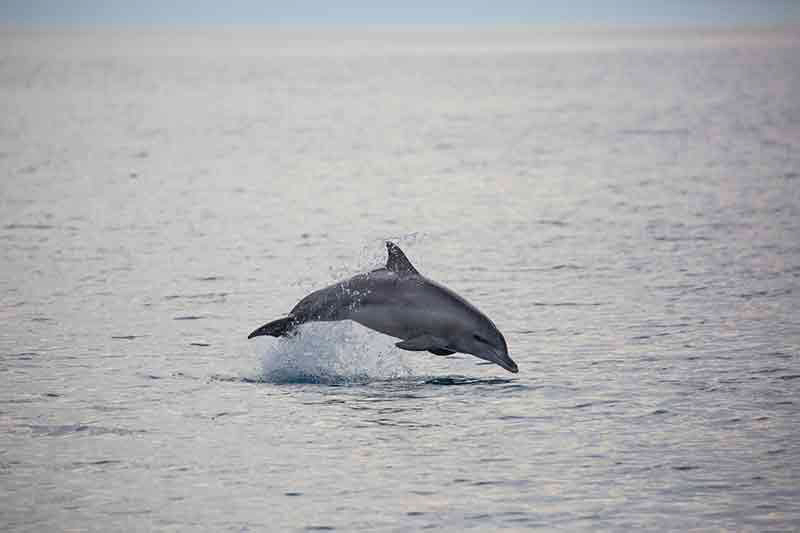
Not infrequently, a whale circles our boat, or dives under the hull and pops up on the other side.
We seem to be constantly running from side to side of the boat. I think the whales are having as much fun as us!
Pods of dolphins also join in the fun and actually interact with the whales, playing with them.
Humpback Whale Conservation
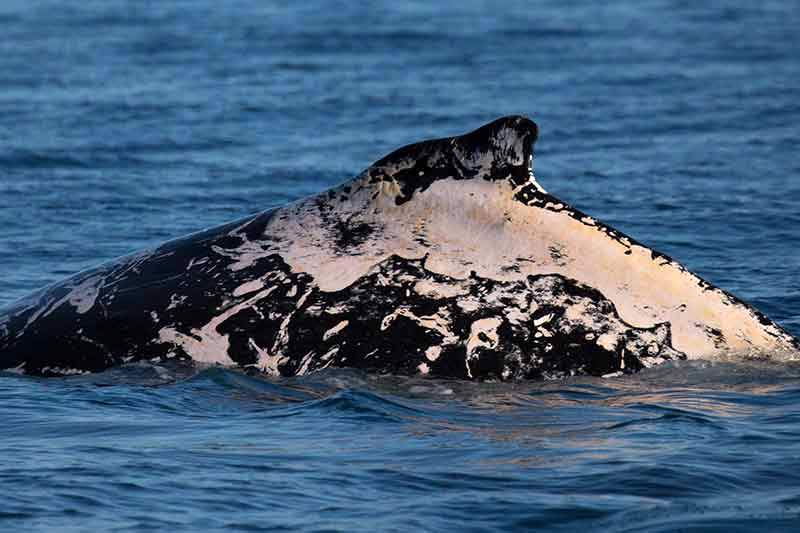
On our return into the harbour, Greg discusses a more serious subject, the International Whaling Commission.
As an Invited Participant to the International Whaling Commission’s Scientific Committee and member of several other committees, Greg is a leader in marine ecotourism and whale conservation.
His whale research programme in Australia started in 1984 and, over the years, his organisation has provided education to the public about whales and their habits.
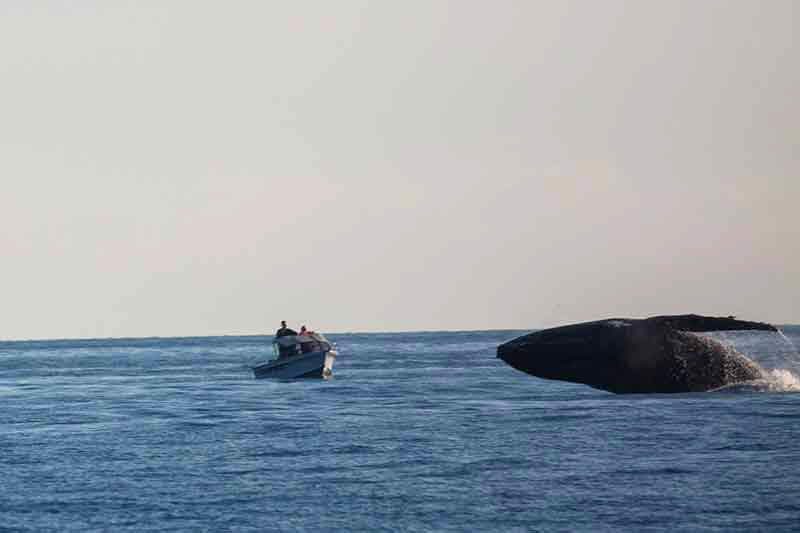
This international body was set up in 1946, “to provide for the proper conservation of whale stocks to make possible the orderly development of a whaling industry,” he says.
Australia has a history of commercial whaling, which began in the late 18th century.
More than 40,000 humpback whales were killed in Australian and New Zealand waters.
Commercial whaling in Australia ceased in 1978.
Now there is a lucrative industry of whale-watching around the world being set up by experts who understand whale behaviour and their dynamic ecosystem.
The next big development is swimming with whales, which is gaining popularity around the globe.
We can only hope that soon two remaining countries, Norway and Japan, will finally see the light and stop their killing programs to help conserve these beautiful majestic mammals.
Let there be more “Whales Ahoy!”, for us all to see and experience.
Pacific Whale Foundation offers whale-watching tours with an ecotourism focus.
How to spot humpback whales
- Scour the horizon constantly and keep looking around the boat.
- Look for steam or smoke coming out of the water.
- Look for dark patches in the water as it could be a whale diving.
Looking for more whale-watching cruises? Read about Freedom III.
A good time to visit Hervey Bay is during the Hervey Bay Ocean Festival, for whales, nautical activities, seafood and the fun whale parade.
Plan Your Trip

Rent A Car – Find the best car rental rates at Discover Cars. They compare car hire companies to provide you with the best deal right now.

Find A Hotel – If you’re curious about this article and are looking for somewhere to stay, take a look at these amazing hotels.



